Adventure To The End Of The World
First published in Sanctuary Asia,
Vol. 43
No. 6,
June 2023
Text and Photographs By Urvi Piramal
Three and a half-metre high waves pounded the Zodiac and the wind roared in my ears. With great difficulty, I crawled onto the gangway. I grabbed the railing for support and as I looked down at the frothing sea, I wondered incredulously… how did I end up in this position?
I had embarked on an exciting and ambitious plan to visit Antarctica, the Last Continent, that great frozen mass of land, a week from Puerto Madryn, a port city on the eastern coast of Argentina. That was where, after a 25-hour long journey via Addis Ababa, Sao Paolo and Buenos Aires, we had boarded our ship – the Ortelius, named after the Dutch cartographer Abraham Ortelius, who published the first Modern Atlas in 1570. Antarctica has been on my bucket list ever since I was a young adult. The vast snowscapes and varied wildlife, especially the waddling penguins, always excited me, and I felt the urge to experience all of that.
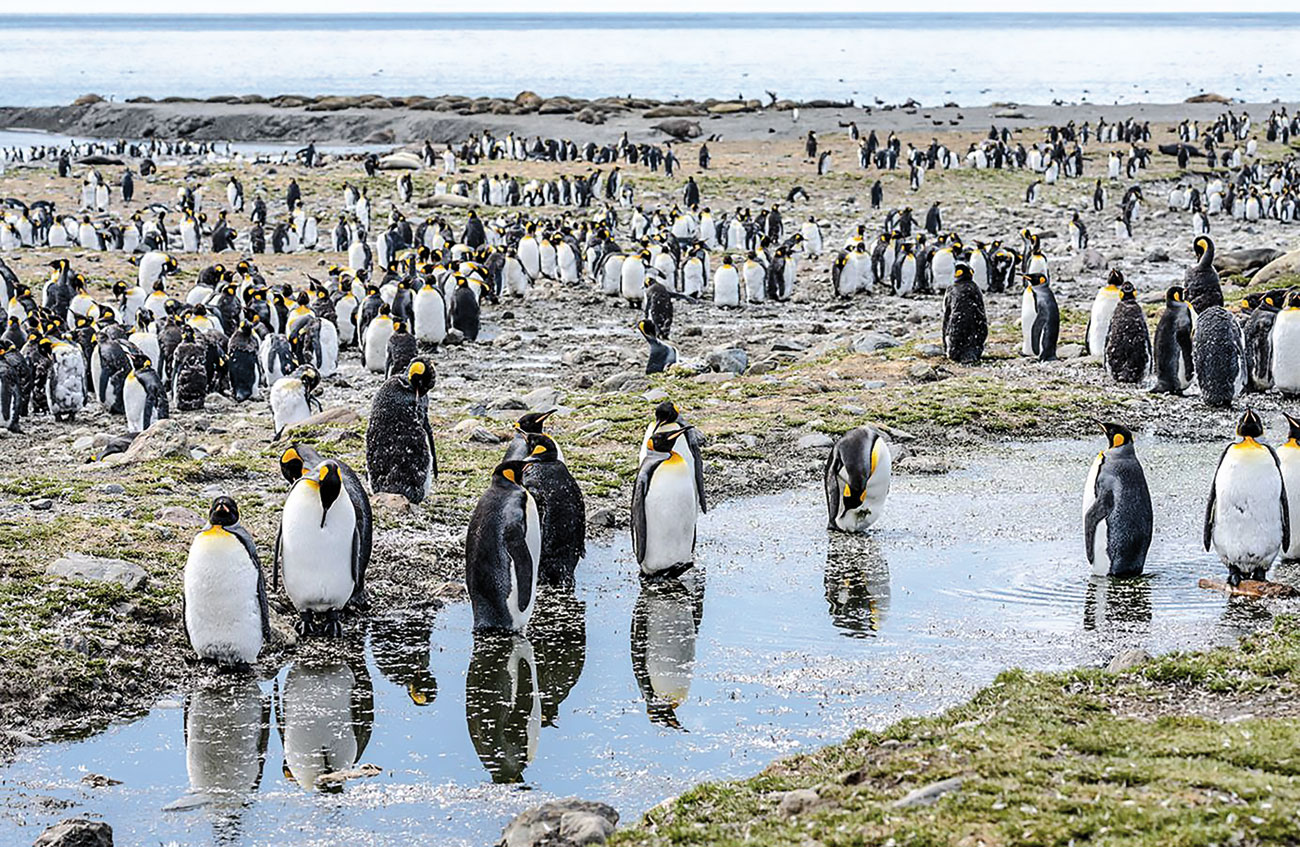
The St. Andrew’s Bay offered a backdrop of the imposing Allardyce mountain range. In front of the snowcapped peaks, was a vast plain full of skuas, seals and a mind-boggling 1,50,000 pairs of King Penguins.
A Tumultuous Journey South
We coasted across the Puerto Madryn narrows and the blue-green waters of the South Atlantic Ocean to enter a belt of latitudes known as the ‘Roaring Forties’. Here a strong westerly airstream between the 400 and 500 South latitudes, created by the temperature difference between the equator and the poles, have battered ships for ages. We hoped they wouldn’t roar too loudly at us!
On the third day, we bypassed Steeple Jackson Island to avoid a storm, and landed instead to its east at Grand Jason. Luckily, favourable conditions prevailed as I followed the pole-marked trekking trail through clumps of tussock grass and rocky terrain to the Black-browed Albatross and Rockhopper Penguin colony.
My progress was slow as I trudged along carrying my heavy backpack, my over three kg. muck boots, 5.5 kg. life jacket, and of course, my camera. Along the way, we passed a family of Ruddy-headed Geese and Striated Caracara, both endemic to the Falkland Islands.
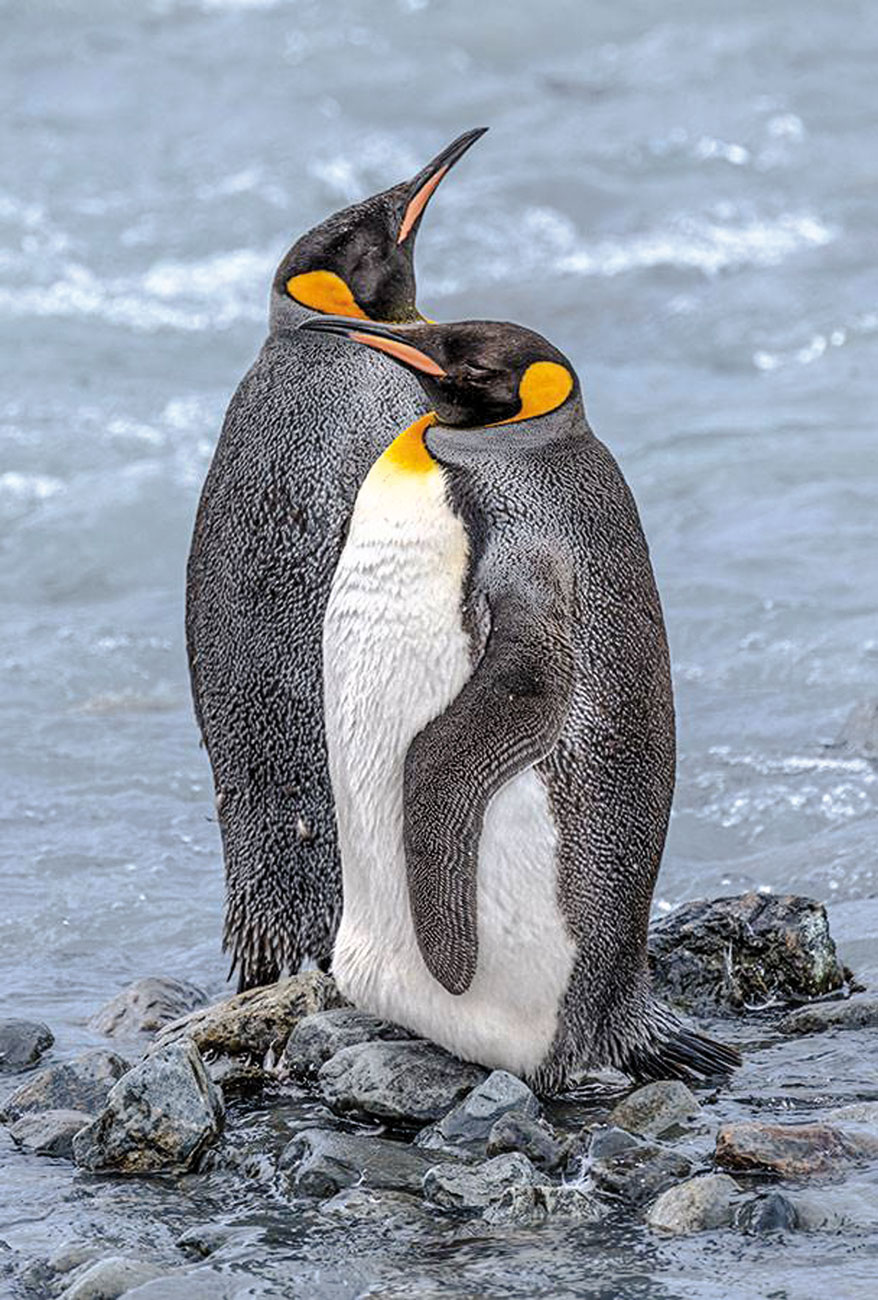
The St. Andrew’s Bay offered a backdrop of the imposing Allardyce mountain range. In front of the snowcapped peaks, was a vast plain full of skuas, seals and a mind-boggling 1,50,000 pairs of King Penguins.
Ten minutes after reaching the colony, we were hastily asked to evacuate the island as the weather was fast deteriorating. I climbed into the last air-filled Zodiac boat leaving the landing site. By the time we reached the ship, the wind was roaring, and the sea swell was at 3.5 m. (approximately 11’). With great difficulty, I clambered onto the gangway with the help of some expert crew members just as darkness had fallen.
That was how I ended up clutching the railings, staring down at the frothy waters and purple seas – no longer distinguishable from the sky. As I huddled safely back in my cabin the weather outside continued to deteriorate and the Captain put Plan B into play, and steered the Ortelius on course for South Georgia.
From the bridge, the captain announced that the wave height had peaked at a little over nine metres (approximately 30’) with wind speeds at 70 knots (150 km./hr.) during the night. Until further notice, all decks except deck six were declared out of bounds for our own safety on the ship.
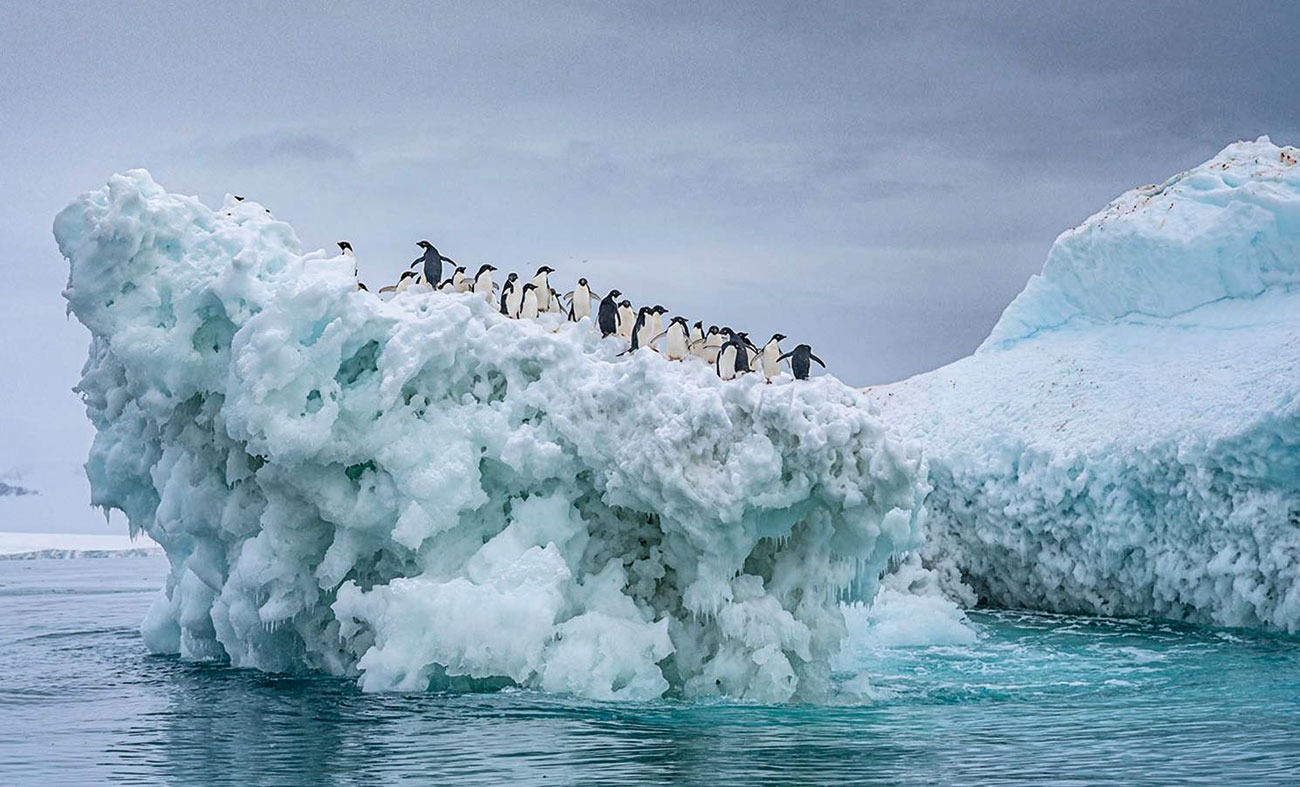
A flock of Adelie Penguins floats on an iceberg in the Antarctic Ocean. The penguins are named after Adèle Dumont d’Urville, who was married to French explorer Jules Dumont d’Urville, the first to discover this penguin species in 1840.
Scrupulous South Georgia
Luckily, the weather improved, allowing us to catch a glimpse of South Georgia, a mountainous island about 170 km. long and 35 km. wide. This would be our home from day four to day 11.
To protect the biodiversity, very strict bio-security guidelines were explained . We had spent the previous day meticulously scrutinising our belongings, using brushes and paper clips, to remove even the tiniest pieces of mud, grass or seeds from our clothes and boots.
At King Edward Point, the administrative centre for South Georgia, a government officer came aboard to conduct the obligatory bio-security inspection and announced that the Ortelius was ‘the best ship’ of the season.
Over the next week, we anchored at South Georgia’s many bays and harbours, including the wide St. Andrew’s Bay, which offered a backdrop of the imposing Allardyce mountain range. In front of the snowcapped peaks, we could see a vast plain full of skuas, seals and a mind-boggling 1,50,000 pairs of King Penguins, protecting their chicks of varying ages. Enroute to the main colony the ship’s crew helped us across a fast-flowing river, flowing behind the plain, betwen the Heaney and Buxton glaciers. Sadly, the effects of climate change were painfully visible here. The Cook glacier, which extended all the way to the beach as recently as the 1980s, had now retreated a long distance inland, leaving a lagoon in its wake.
Ocean Harbour was a tiny, sheltered bay full of seals and giant petrels. On our way out, we swung by the wreck of the sailing ship Bayard, which had lain in its current position since before World War I. The ship has now been reclaimed by tussock grass and nesting Blue-eyed Shags. At Jason Harbour, we kept a safe distance of at least three metres from the seals because we were informed that though they looked sluggish, if they felt threatened, the pinnipeds could attack! Needless to say we took the warning very seriously!
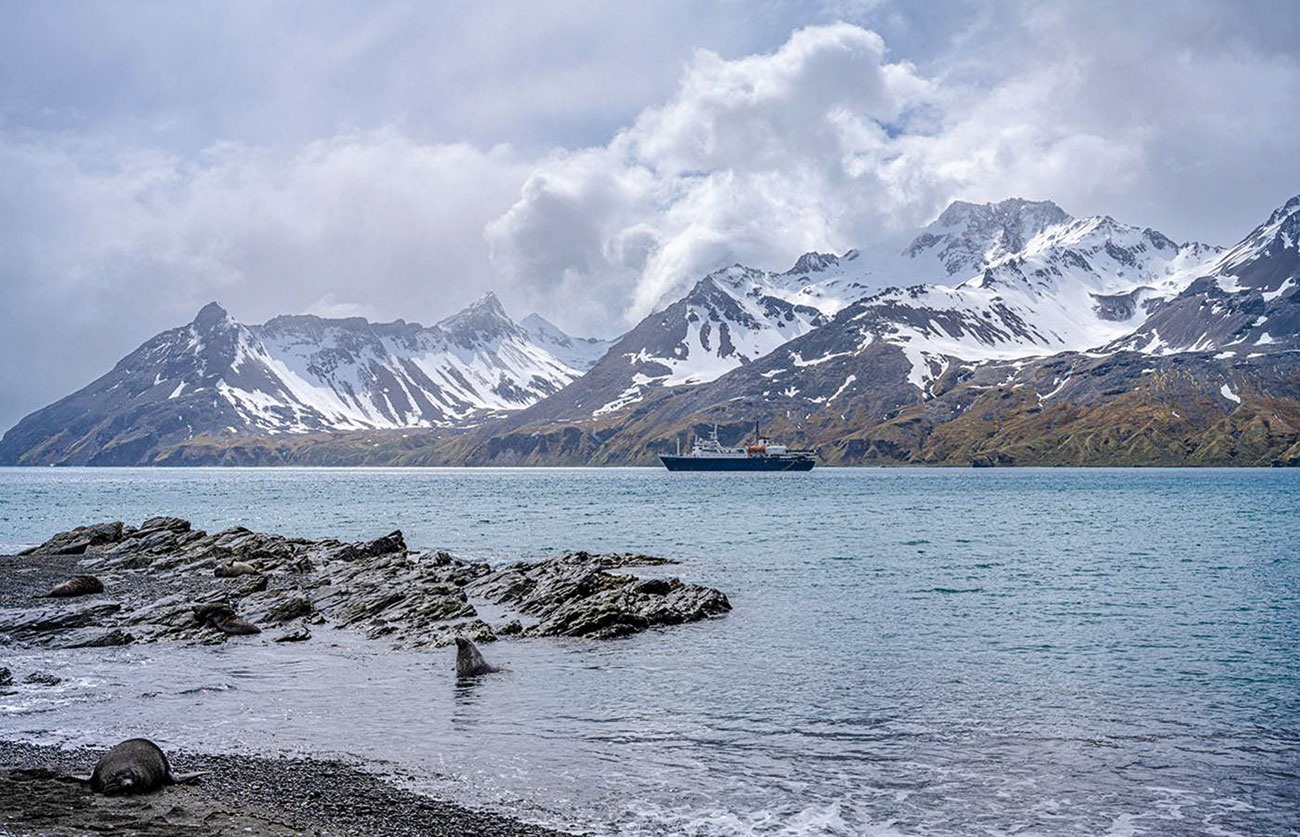
Fortuna Bay, situated along the northern coast of South Georgia, is a picturesque destination embraced by majestic mountains and home to abundant wildlife.
Isolated Icy Havens
Our South Georgia sojourn included visits to Grytviken, Fortuna Bay and Gold Harbour.
Grytviken, once a whaling station established by Carl Anton Larsen in 1904, lay disused. The rusting ruins offered a stark contrast to the magnificent snow-capped massifs, Mount Duse and Mount Hodges. As I stared at the complex, rusting structures once used to store oil along the shore I felt strongly that all these, together with the decaying wrecks left behind by whale, fur and elephant seal hunters should be removed to protect this frozen wonderland. On the island we also saw a church, a museum, a post office, and a whalers’ cemetery with it 64 graves. We noticed that Sir Ernest Shackleton, an Anglo-Irish explorer who had led three British expeditions to the Antarctic, was also buried here. We stood in silence looking at these reminders of the past as snow softly fell around us.
Fortuna Bay, on the north shore of South Georgia’s rugged coastline, supports a sizeable King Penguin colony. The yellow-orange on the King Penguins’ neck against the green of the vegetation, and the contrast of fresh snow on the black mountains made for stunning images. In silence, I took in the austere, little-seen sights of the wonderland before me. Unafraid of us, hundreds of elephant and fur seals and colonies of King Penguins taking in the sun presented a canvas of nature untamed.
I watched in awe as some penguins waddle-walked single file to the water’s edge, waiting for a good wave to plunge into the ocean. It was an inspirational sight, but I could not help but wonder how much longer they would hold on to life, what with the accelerating climate crisis that Homo sapiens have unleased on our planet and its myriad lifeforms.
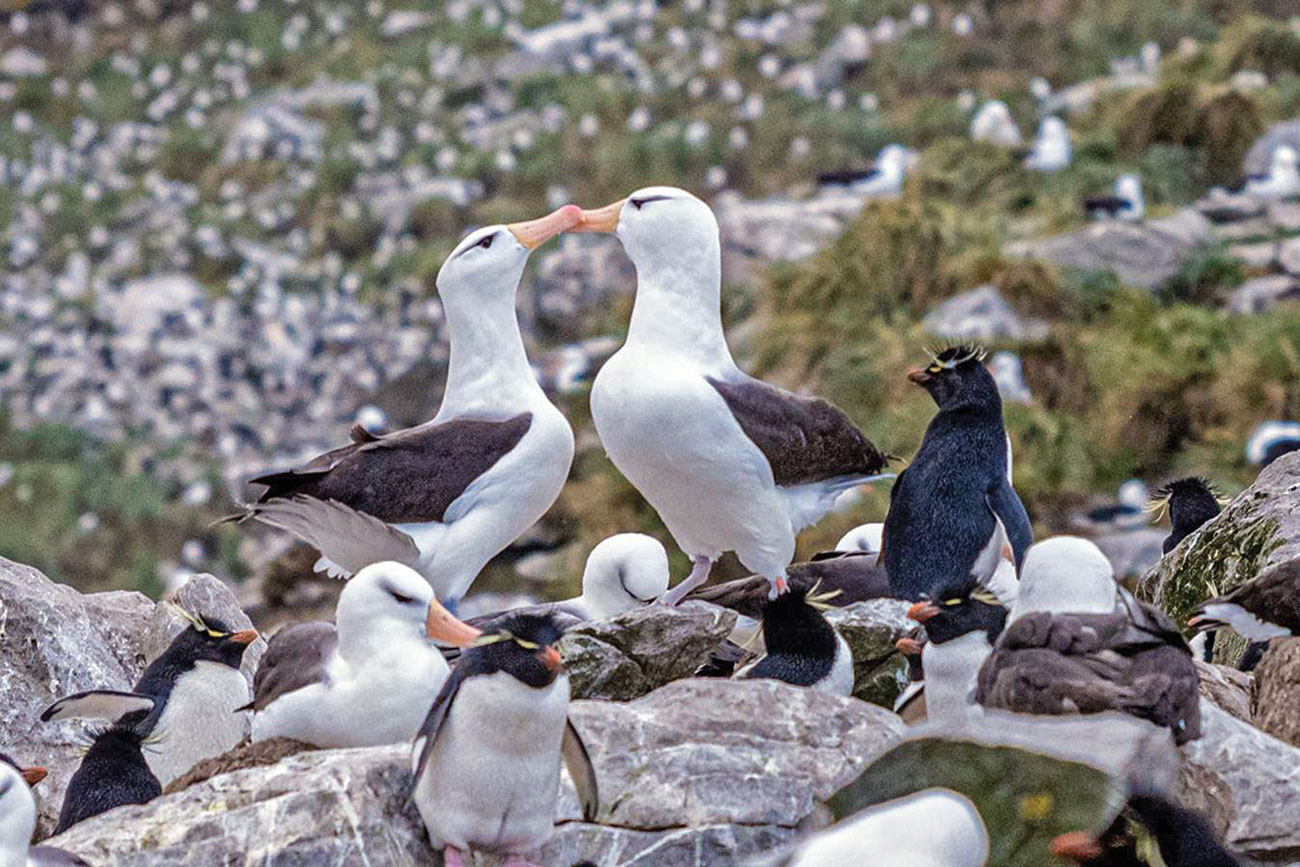
Black-browed Albatrosses exhibit monogamy, with individuals often remaining faithful to their mates for their entire life. Their breeding season starts around September or October and continues until April. During this time, mating pairs engage in specific behaviours, such as exchanging food and assuming distinct postures while facing one another. The author saw a colony of Black-browed Albatross and Rockhopper Penguins at Grand Jason island.
By far, Gold Harbour had the heaviest concentration of wildlife on the island. The beach was packed with seals. To avoid disturbing them, the first part of our trail was up a small, shallow riverbed. The route opened for us, leading to an impressive King Penguin colony with towering mountains and the Bertrab Glacier as a backdrop. Fat, fully fed adults arrived from the sea, calling for their chicks that recognised the calls and answered them. To us the calls sounded like a cacophony of sounds. But I learned later that penguin chicks’ calls are emitted with a frequency modulation that adults recognise as a distinct, identifiable vocal signature. Incredibly, parents can hone in on their own offspring without the help of nests!
South Georgia had abandoned whaling stations. Whaling was practiced as early as 875 AD and the mammals were killed for their meat and blubber, which was turned into a type of oil that facilitated the Industrial Revolution. Whaling is now illegal in most countries except Iceland, Norway and Japan, which between them kill over 1,000 whales each year. But for now, I pushed such thoughts out of my head as we headed around the coast to Stromness Bay, where we were delighted to see that the whaling station islands of yore had been taken over by wildlife, mainly seals and birds.
On our last day, the eleventh of the life-changing experience, the weather started deteriorating again. The Captain called an emergency meeting and informed us that severe weather systems were racing towards South Georgia and the movement of a low pressure system and the presence of a giant iceberg would affect our journey south.
We promptly left South Georgia and headed straight to Antarctica.
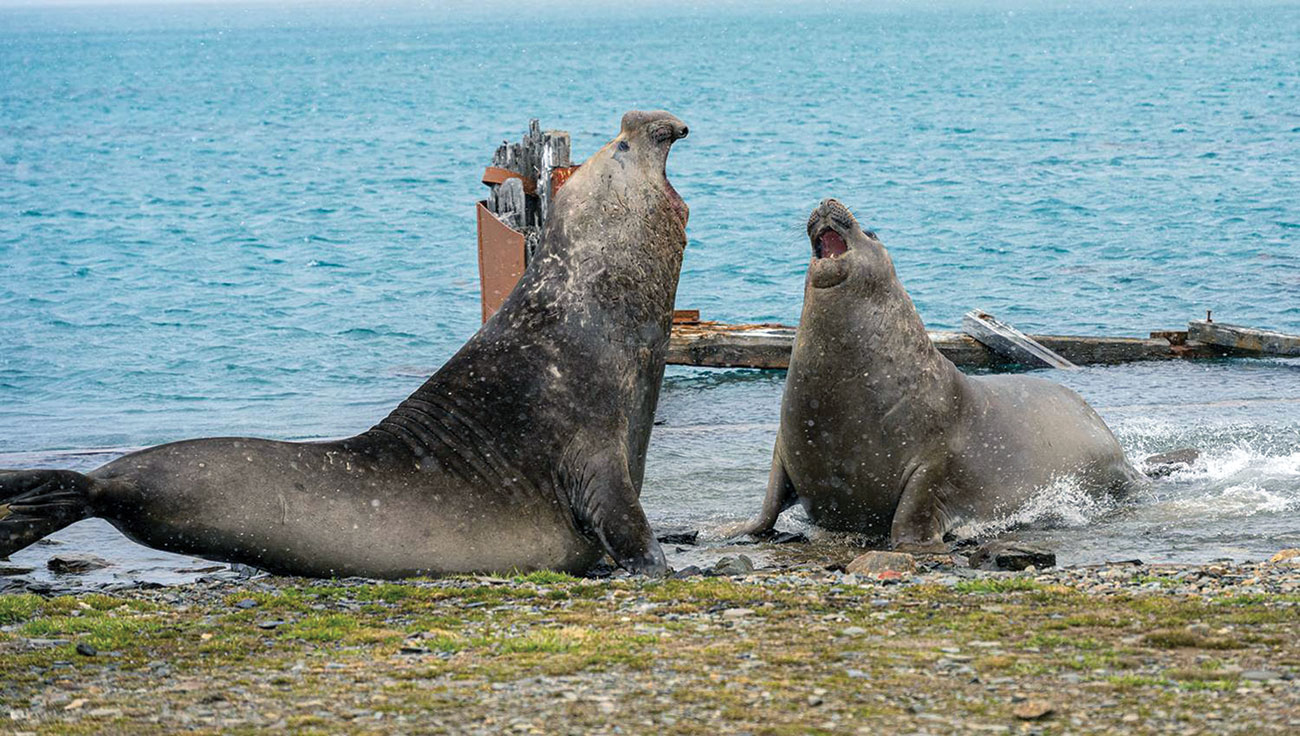
The wrecks left behind by elephant seal hunters was a sharp reminder of the threats faced by the species in the past. Every year in December, elephant seal males will commonly challenge each other for dominance in territorial and mating rights. Initially, the dominant male will try to ward off younger intruders by blowing bubbles, roaring and other intimidating postures. If the intruder persists, a serious fight may take place, with males biting each other and drawing blood.
The Continental Landing
Over the next three days at sea, we saw the biggest iceberg on earth: A/76 was 170 km. long and 25 km. wide when it broke away from the Filchner-Ronne Ice Shelf in Antarctica in May 2021. As it slowly appeared through the dense fog, we saw an endless ice cliff at least 45 m. (approximately 147’) high. For the best part of an hour, we sailed past this colossal beast. Big waves crashed and rebounded from the massive wall of ice, creating a confused sea state. Spotting of growlers – small but dangerous chunks of ice – was a challenge for the ship’s crew. The sight was spectacular and humbling.
On day 14, we crossed the 60th parallel of latitude, the geographical boundary of Antarctica. We had officially arrived! Vast menacing glaciers and the black rock mass of Elephant Island loomed before us, as the Captain steered the ship slowly and carefully to avoid lurking growlers. In the event, we could not set foot on Antarctica because the weather reared its warning head. So, we moved on to Brown Bluff Island instead. Here too our first attempt to land was unsuccessful, but the next day, at 4.30 a.m., we finally made our first continental landing.
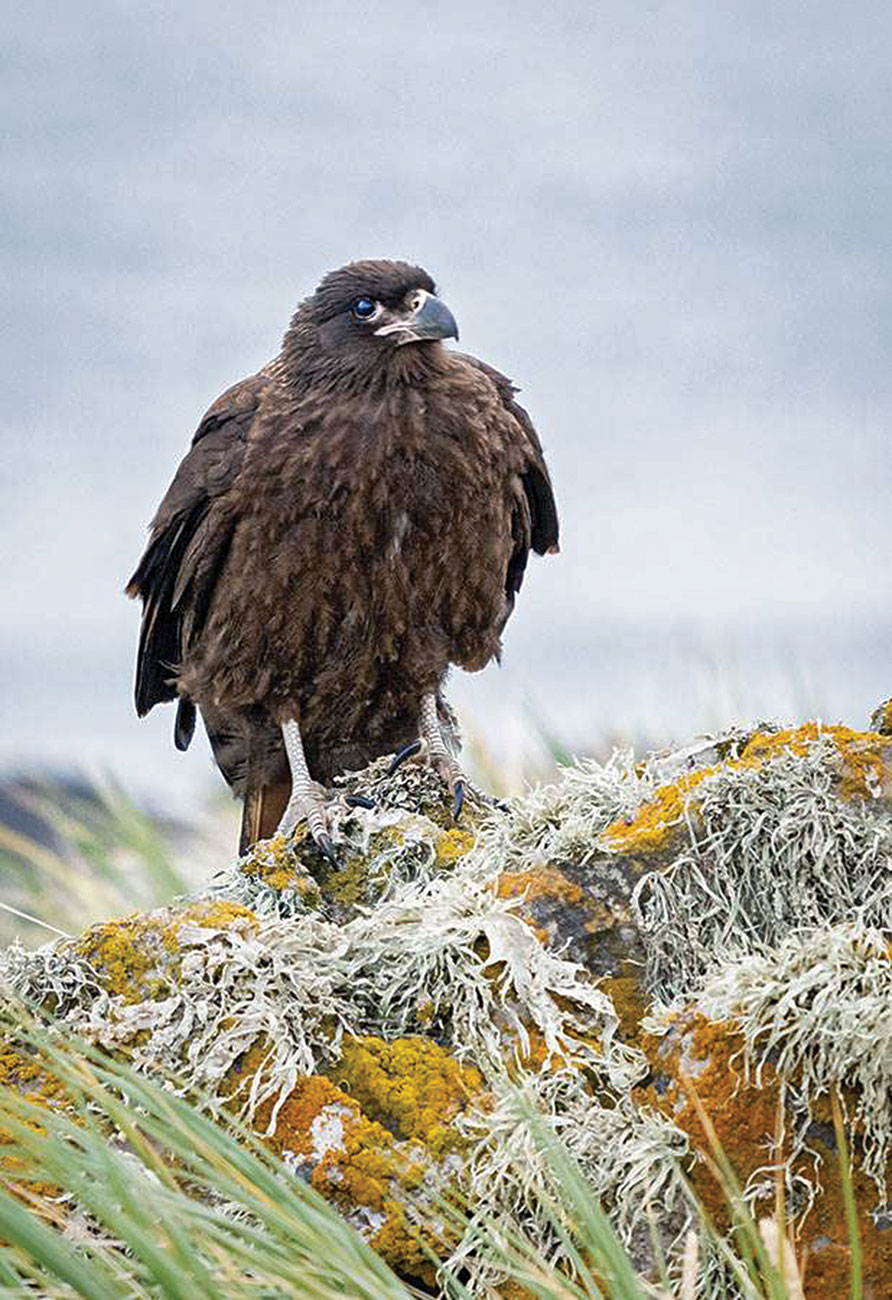
As the author trudged along Grand Jason island with her heavy backpack and gear, she spotted a family of Striated Caracara Phalcoboenus australis, birds of prey from the Falconidae family. They are found in Falkland islands, Chile and Argentina. They typically breed in the Falkland islands from October to January.
Antarctica is the only continent that does not support terrestrial mammals, but marine mammals are in wild abundance. We saw, literally, thousands of breeding Adelie Penguins, plus some Gentoo Penguins! Huge boulders of tumbled ice lay strewn along the beach. After a few enchanted hours we headed back to the Ortelius and Paulet Island, home to colonies of Adelie and Gentoo Penguins and the Imperial Shag, aka the Blue-eyed Cormorant.
We left Antarctica to brilliant sunshine, calm waters and non-threatening giant icebergs, sailing through the Antarctic Sound, a body of icy water between two islands, as we headed towards Edinburgh Hill and Discovery Bay, only to be thwarted again by rough weather.
Our route took us through a narrow and spectacular passage called Neptune Bellows, straight into a flooded caldera – known as Deception Island. Here at Whaler’s Bay, we were once again witness to rusted oil tanks and other remnants from the 20th Century whaling industry, abandoned along the volcanic, black sand beach, and old buildings from a British scientific station, evacuated after a 1969 eruption of the island’s still-active volcano!
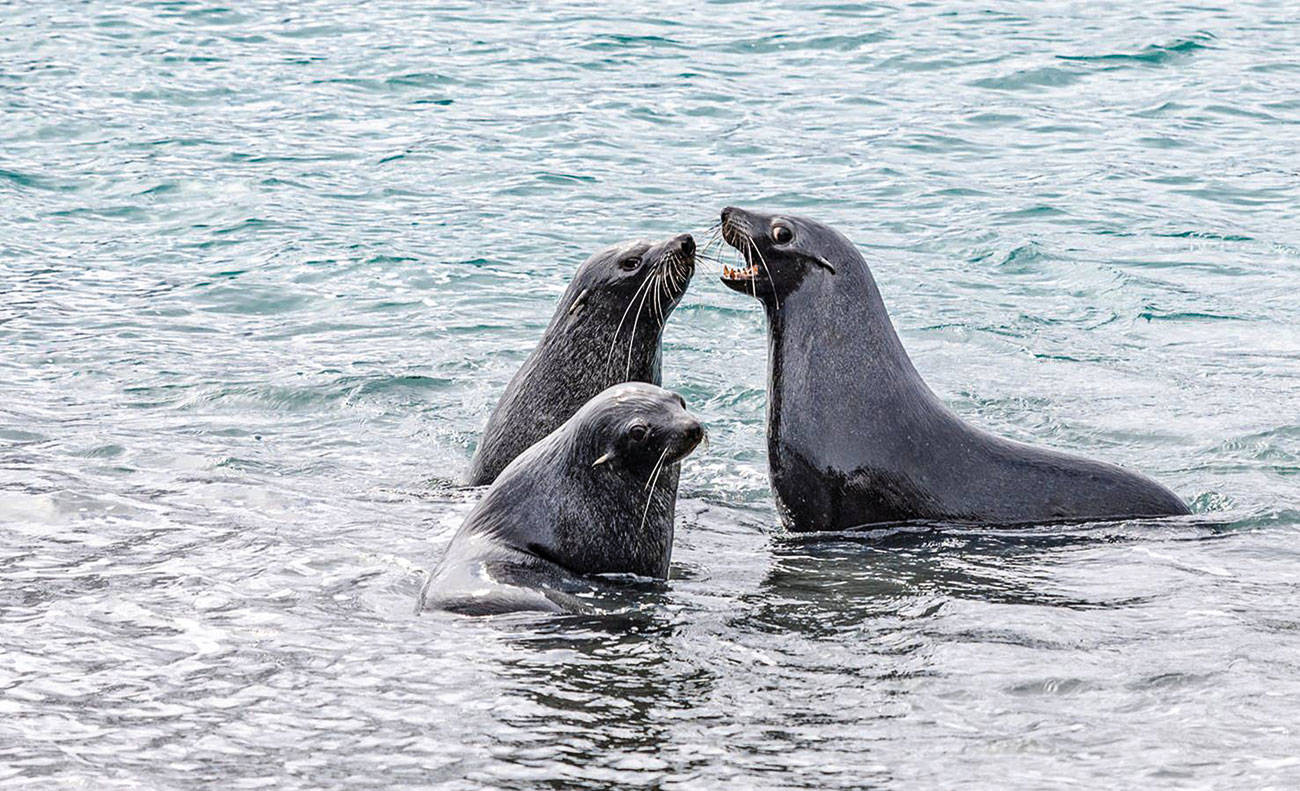
Fur seals are a group of pinnipeds comprising nine species within the subfamily Arctocephalinae of the family Otariidae. These marine mammals were extensively targeted by commercial sealers, particularly in the 19th century, on account of the high demand for their fur.
The winds picked up again and blew away all our chances of visiting any other locations. We headed back north across the Drake Passage, between Cape Horn at the tip of South America and the Antarctic Peninsula, renowned for its rough and high winds. Luckily for us now hardened seafarers, it was easy passage. We docked in Ushuaia, at the southernmost tip of Argentina, aptly named The End of the World.
Our adventure had ended.
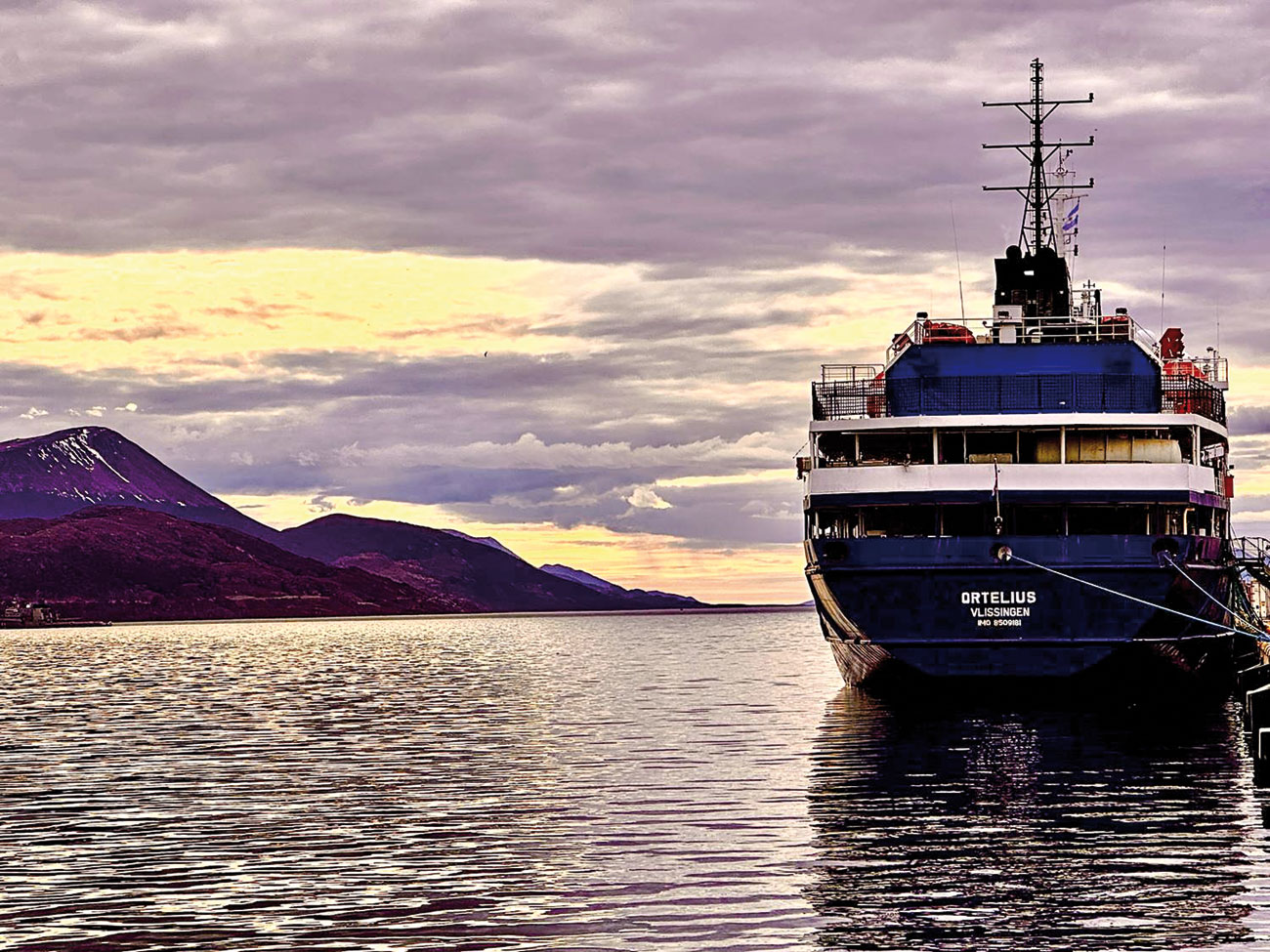
The Ortelius, which bore us on our journey to Antarctica, is named after the Dutch cartographer Abraham Ortelius, who published the first Modern Atlas in 1570.
Footnote Memories
My journey to the Antarctic exposed me to exquisite expressions of nature, ranging from comical penguins and humongous elephant seals, to pristine glaciers and snow-covered mountains. I experienced weather and environmental conditions not found anywhere else in the world. I visited places few humans have ever seen. Most importantly, however, I learned to value my one precious life more than ever before. My family and friends will attest to the fact that I am an avid photographer. I did indeed spend hours clicking, editing and collating my photographs from the trip. But as I sit back now and contemplate my journey, I really do not have to resort to poring over my images. That soft morning light cast over waddling penguins, white-topped mountains, black volcanic sands, columns of waves, the pink and purple sky are forever etched in my memory.
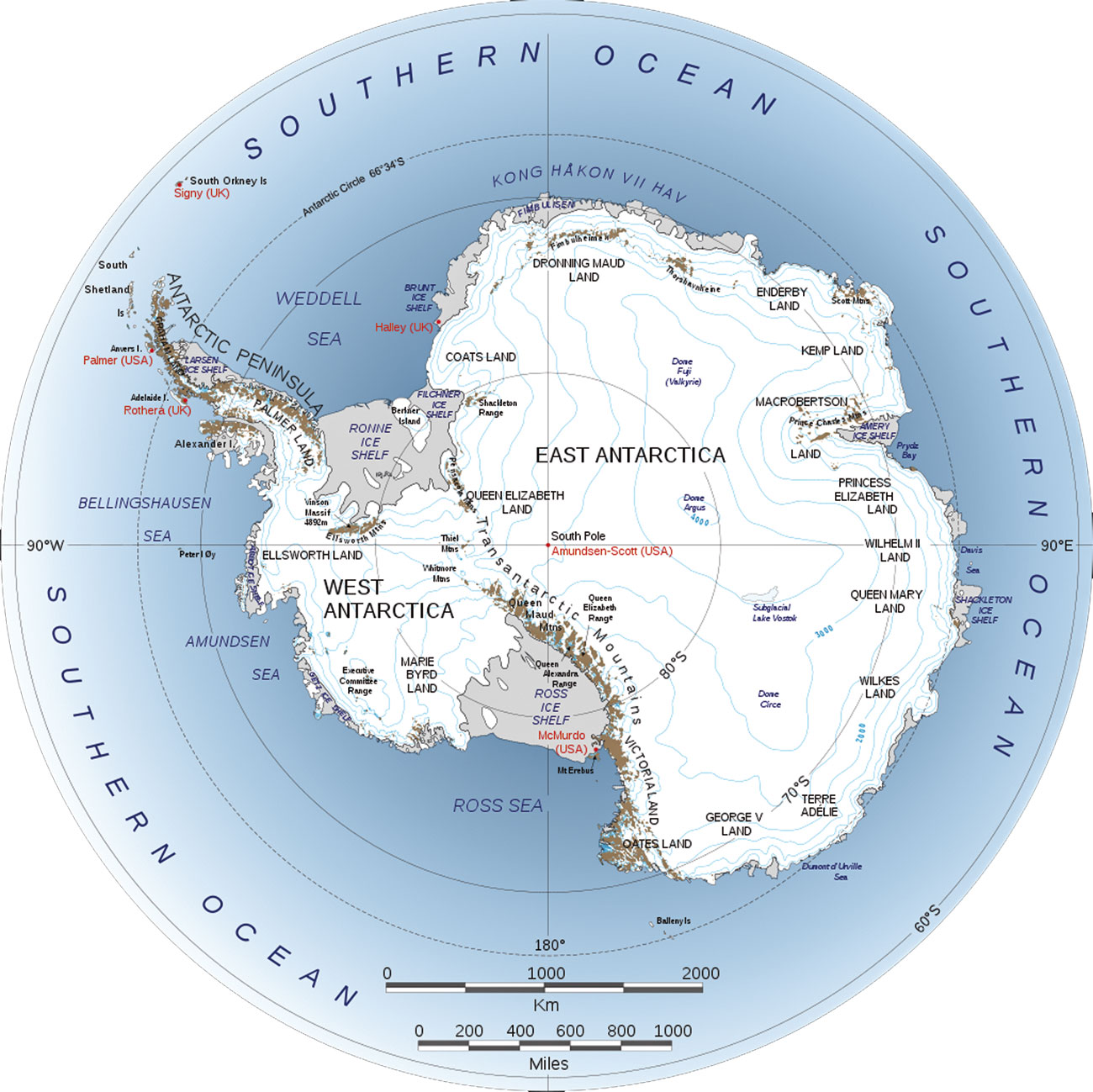
Over the past 50 years, Antarctica has proven to be one of the fastest warming geographies in the world. The average temperature has risen by 30C and the sea level by over 6.6 cm. since 1993. The glacier outflow has also increased. Like most others, I too had read and been concerned about our climate crisis, but my Antarctic sojourn etched in my mind the sheer degree to which nature is delicately balanced.
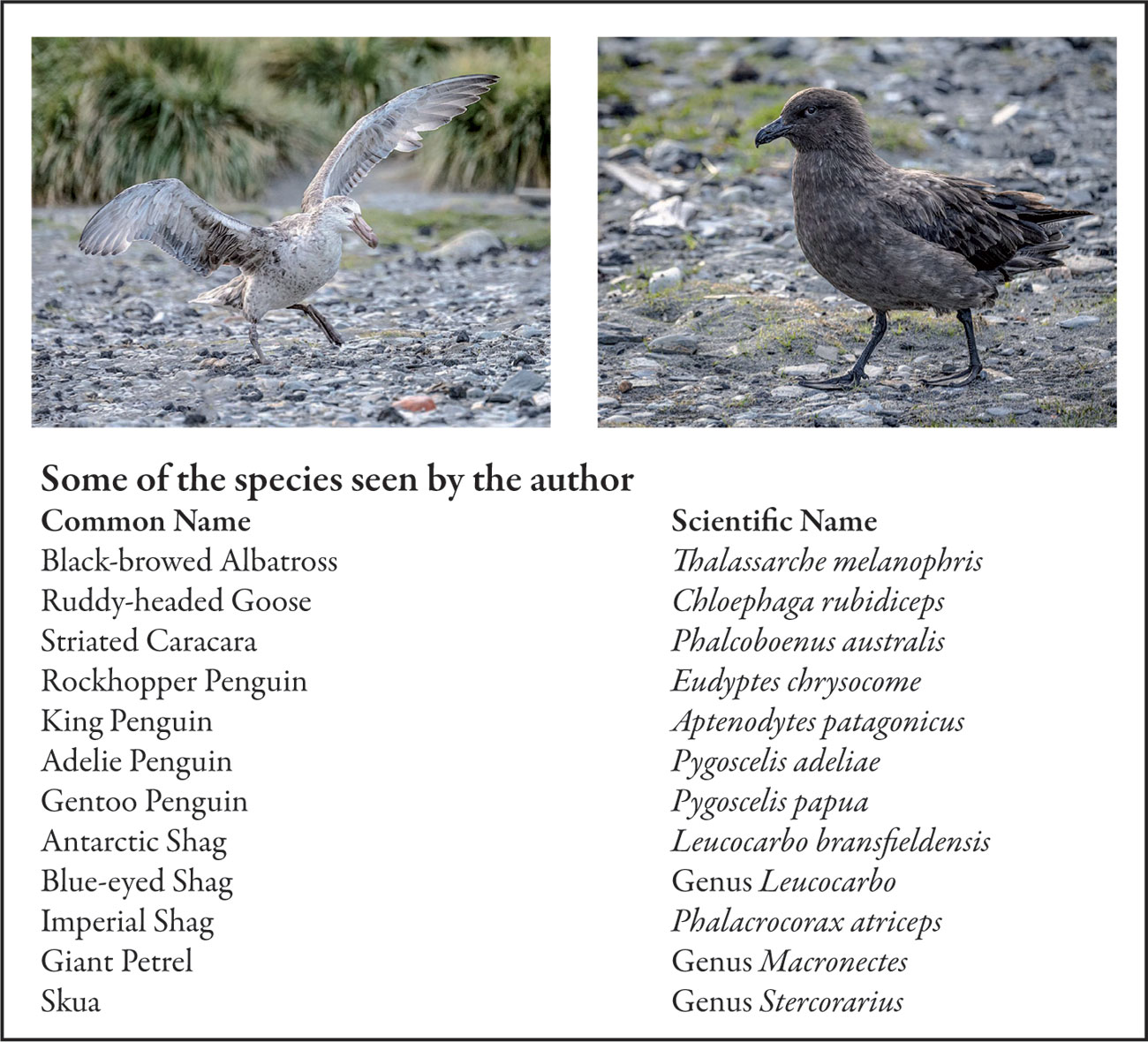
People often use the expression life-changing freely, but for me, my Antarctic adventure was just that. It has inspired me to work toward environmental protection and I hope Sanctuary readers will join in this effort.
Urvi Piramal Award-winning industrialist who oversees a professionally managed conglomerate with business interests in real estate and textiles, she is also a trustee of the Wildlands Conservation Trust and a wildlife and travel enthusiast who has published two books on wildlife in India and Africa.












